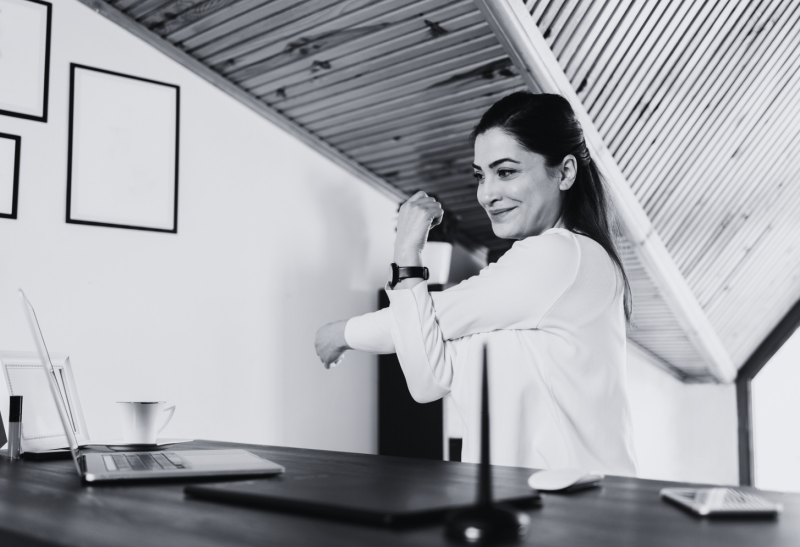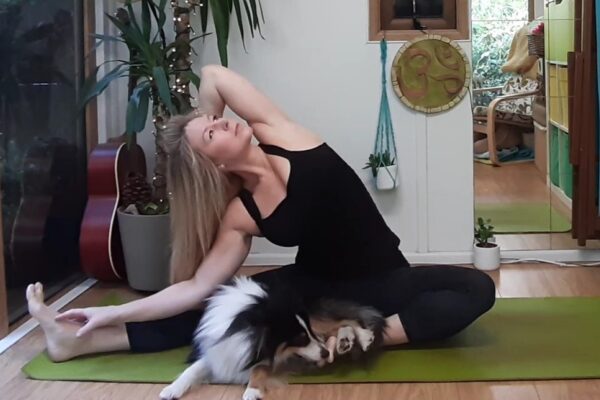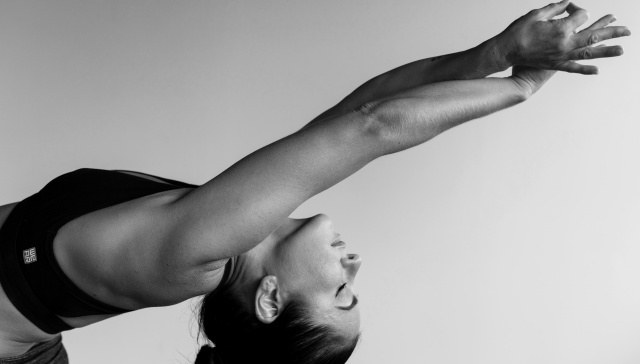Desk Yoga

Desk yoga offers simple poses people can do at the office, or at their desk if they are working from home.
We provide Desk Yoga Classes for companies everywhere in the UK, in-person or live-streamed. Get in touch to book a class.
What is Desk Yoga?
Desk Yoga is a type of yoga people can practice at their desks in office clothes. Inspired by Chair Yoga, Desk Yoga can be practised online or in person, in the office or at home.
What are the differences between desk yoga and chair yoga?
Desk Yoga is a type of yoga people can practice at their desks in office clothes. Inspired by Chair Yoga, Desk Yoga can be practised online or in person, in the office or at home.
The difference between Desk Yoga and Chair Yoga is that Desk yoga can help with desk work-related issues, while chair yoga is a yoga practice supported/modified by a chair.
Desk yoga is designed for desk workers of any age, flexibility and fitness level, while chair yoga is practised mainly by people with injuries, after surgery, people with balance issues, or people stiffened by age.
Also called adaptive yoga, chair yoga was invented in 1982 by Lakshmi Voelker. A certified Kripalu yoga instructor, Voelker was a member of the International Association of Yoga Therapists.
Desk yoga can be gentle or rigorous, depending on how the chairs are used. It involves gentle stretching or more challenging postures, breathing exercises and relaxation techniques.
Desk Yoga Benefits
Benefits for participants
When you practice desk yoga, you get the benefits of a light workout combined with benefits for your posture and the nervous system.
Like other types of yoga, desk yoga has many benefits that other sports might not have, including relieving pain (in joints and lower back), improving sleep, and reducing anxiety and stress. Twists and inversions could even help your organs (including your brain) function better.
Benefits for organizers
Desk yoga is easy to organise in a work environment. There is no need for costly and bulky yoga mats; any office has what desk yoga needs: chairs.
Desk yoga can be organised remotely or/and in the workplace. Organising the desk yoga class live stream allows people at HQ and people working from home to join the same class.
Tip: People at HQ can practice desk yoga together in a meeting room instead of by themselves at their desk.
Who can practise desk yoga?
Everyone can participate regardless of age, mobility, or fitness level. You'll practice either sitting on or holding the chair, making desk yoga accessible to all.
What injuries do desk workers get?
Sitting down for long hours makes us stiff and sore. We get pain in the lower back area, the shoulder area, and the neck. It is recommended to move every twenty minutes, but who does it? Practising desk yoga regularly can help prevent work injuries.
Savant terms for Desk worker's common injuries:
- Carpal Tunnel Syndrome: Resulting from repetitive mouse use and keyboard typing.
- Tendinitis: Inflammation or irritation of a tendon due to overuse.
- Impingement Syndrome: Shoulder pain stemming from prolonged, awkward positioning.
- Cumulative Trauma Disorder of the Upper Extremity: Includes conditions affecting the shoulder, arm, forearm, wrist, and hand due to overuse or exertion.
- Repetitive Strain Injury: Symptoms include numbness, tingling, fatigue in shoulders, and muscle tension, often due to poor ergonomic setup or overuse of certain muscles.
Can you practise wearing office clothes?
We suggest people just take their shoes off, loosen their belts, open their shirt's neck and wrist buttons, and untuck their T-shirts from their trousers to move without being too constrained.
Yoga is usually practised in gym clothes, so if the office environment is relaxed and changing is possible, go ahead!
Can you practise chair yoga if your chair is on wheels?
Practising desk or chair yoga in a chair without wheels is safer and more stable, providing a solid foundation for your exercises. While it's possible to use a chair with wheels, a non-rolling chair is preferable for most practices to avoid any risk of the chair moving unexpectedly.
If the only chair available is a chair on wheels, put the chair's brakes on if it has any, or try wedging it against the wall or between the desk and the wall to make it steady.
Recommended time and duration of a Desk Yoga session?
Desk yoga is most beneficial after a few hours of working, either around lunchtime or at the end of the day.
Desk yoga can last 5 minutes, 10 minutes, 15 minutes, 30 minutes, 45 minutes, or 1 hour, depending on the team's availability. A maximum of 30 minutes is recommended to maximise engagement; anything longer might be challenging to fit into a busy schedule.
An intensive desk yoga program could involve planning daily 30-minute sessions; depending on their availability, staff could join all or a few sessions during the week.

Desk Yoga poses examples
Seated twist
How to get in the pose:
Sit on the chair making sure your buttocks are as far in as possible, but keep your feet flat on the floor (put yoga blocks or books under your feet if necessary). Sit straight.
While in the pose:
Put your right hand on the outside of you left thigh or knee, make your arm strong, engage the top of you body in the twist, take a few breath, release, do the same on the other side.
A variation:
If your chair has a flat seat, you could sit sideways and gently hold the top of the back of the chair with both hands to twist.
Seated pigeon
How to get in the pose:
Sit comfortably on the chair with your feet flat on the floor. Lift your right leg and place your right ankle on top of your left thigh, just above the knee. Flex your right foot to protect your knee and sit up straight.
While in the pose:
Gently press down on your right knee with your right hand. Keep your back straight. Repeat the process on the other side.
A variation:
Lean forward from your hips while keeping your back straight. This will intensify the stretch in your hip and glutes on each side.
Seated cat-cow
How to get in the pose:
Sit on the edge of your chair with your feet flat on the floor and hands on your knees. Sit up straight, back neutral and your shoulders relaxed.
While in the pose:
Inhale deeply, arching your back, lifting your chest, and head towards the ceiling for Cow. Squeeze your shoulder blades together to open your chest. On the exhale, round your back, tuck your chin towards your chest, and draw your belly button towards your spine for Cat.
A variation:
Clasp your hands in front of you. As you exhale, round your back and push your palms forward,. On your next inhale, bring your clasped hands up towards the sky, arch your back, and lift your chest.
Our Desk Yoga teachers

Nick Stolerman

 Live Yoga Teachers
Live Yoga Teachers
